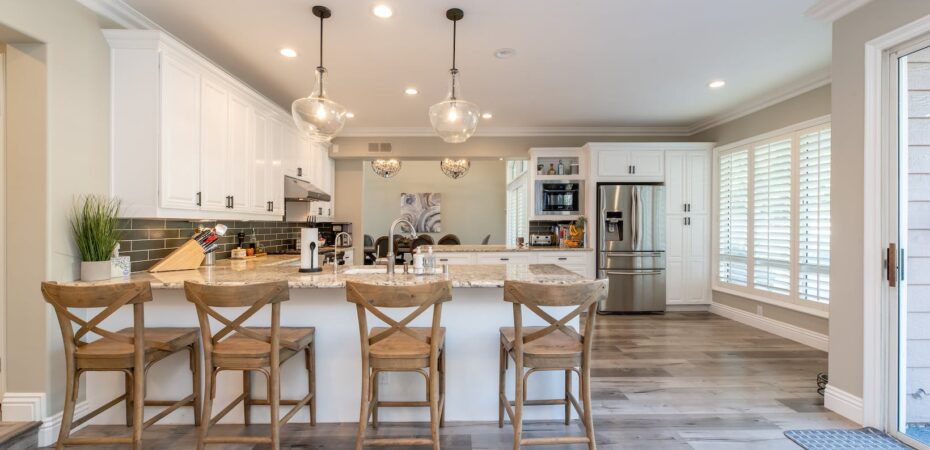
Distance between Cooktop and Hood
When it comes to kitchen safety and functionality, the distance between a cooktop and hood is a critical consideration. The cooktop and hood are two essential components of any kitchen, and their proper placement is crucial for efficient ventilation and to prevent any potential hazards. In this article, I’ll delve into the importance of maintaining the right distance between the cooktop and hood, and provide you with some guidelines to ensure optimal performance and safety in your kitchen.
Achieving the ideal distance between the cooktop and hood is vital for effective smoke and odor extraction. A well-positioned hood helps to remove smoke, steam, and cooking odors from the air, creating a healthier and more comfortable environment in your kitchen. Furthermore, it plays a significant role in preventing the accumulation of grease and grime on surfaces, reducing the risk of fire hazards. In the following paragraphs, I’ll discuss the recommended distance between the cooktop and hood to maximize ventilation efficiency and minimize potential risks.
To determine the appropriate distance between the cooktop and hood, several factors need to be taken into account. These include the type of cooktop, the size of the hood, and the overall layout of your kitchen. Adhering to the manufacturer’s guidelines is crucial to ensure proper ventilation and avoid any warranty issues. In the next section, I’ll outline some general recommendations for the distance between the cooktop and hood based on different cooktop types and hood sizes.
Importance of the Distance Between Cooktop and Hood
Safety
Ensuring the proper distance between the cooktop and hood is essential for kitchen safety. When cooking, it’s not uncommon for smoke, steam, and cooking odors to fill the air. Without a well-positioned hood, these pollutants can linger, creating an unhealthy environment. Additionally, the accumulation of smoke and steam can increase the risk of fire hazards.
By having an appropriate distance between the cooktop and hood, you can effectively control and eliminate these potential risks. The hood’s ventilation system can efficiently capture and remove smoke and steam, preventing them from spreading throughout the kitchen and the rest of your home.
Efficiency
In addition to safety, the distance between the cooktop and hood also affects the overall efficiency of your kitchen ventilation system. Proper ventilation is crucial for maintaining a comfortable and odor-free cooking environment.
When the hood is too far from the cooktop, it may not effectively capture the smoke and odors produced during cooking. This can result in poor air quality and lingering smells in your kitchen. On the other hand, if the hood is too close to the cooktop, it may create restrictions and hinder your ability to cook comfortably.
By ensuring the right distance between the cooktop and hood, you can optimize the ventilation system’s performance. This allows the hood to effectively capture and remove smoke, steam, and cooking odors, preventing them from spreading throughout your kitchen and home. Proper ventilation also helps to minimize the buildup of grease and moisture, which can lead to damage or discoloration of cabinets and other kitchen surfaces.
Remember, the distance between the cooktop and hood will vary depending on factors such as the type of cooktop and the size of the hood. To determine the appropriate distance, it’s crucial to refer to the manufacturer’s guidelines. Following these guidelines not only ensures proper ventilation but also helps maintain the warranty compliance of your cooktop and hood.
In the next sections, we will discuss general recommendations for the distance between the cooktop and hood based on different cooktop types and hood sizes. These guidelines can serve as a starting point in determining the ideal distance for your kitchen setup.

Factors to Consider When Determining the Distance Between Cooktop and Hood
When determining the distance between a cooktop and hood, it is essential to consider the regulations and building codes in your area. These regulations are put in place to ensure safety and proper ventilation in your kitchen. Violating these regulations can not only lead to potential hazards but can also result in legal consequences.
Make sure to check with your local authorities or consult a professional to understand the specific regulations and building codes that apply to your location. These guidelines will provide you with the minimum and maximum distances allowed between the cooktop and hood, taking into account factors such as the type of cooktop and the size of the hood.
Additionally, the power or BTU (British Thermal Unit) rating of the cooktop should be taken into account. Higher BTU ratings indicate higher heat output, which may require more ventilation. Check the manufacturer’s guidelines or consult a professional to determine the appropriate distance based on the specific BTU rating of your cooktop.


 By
By 




